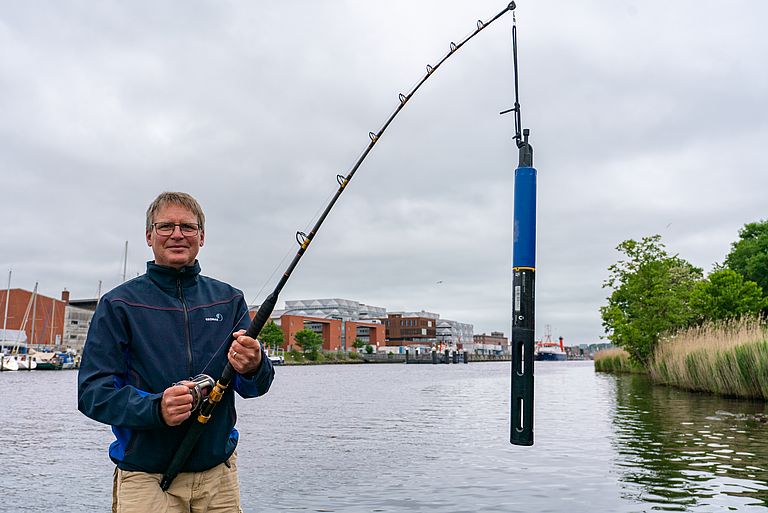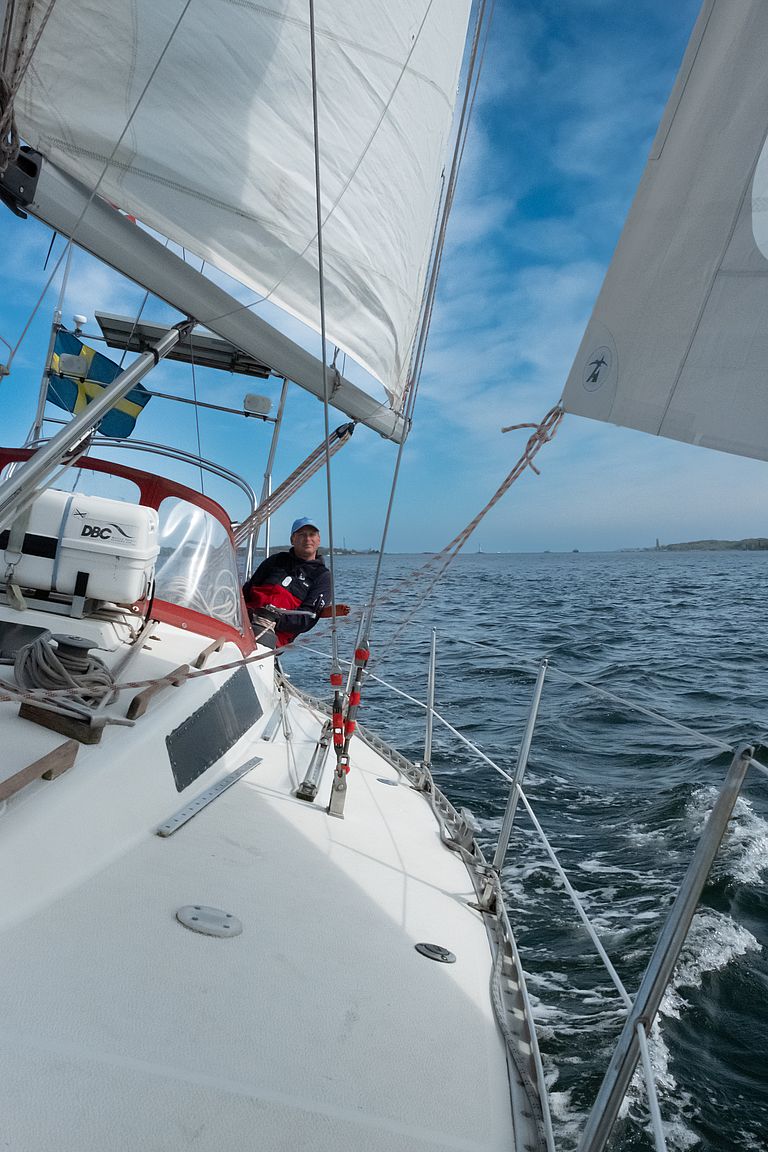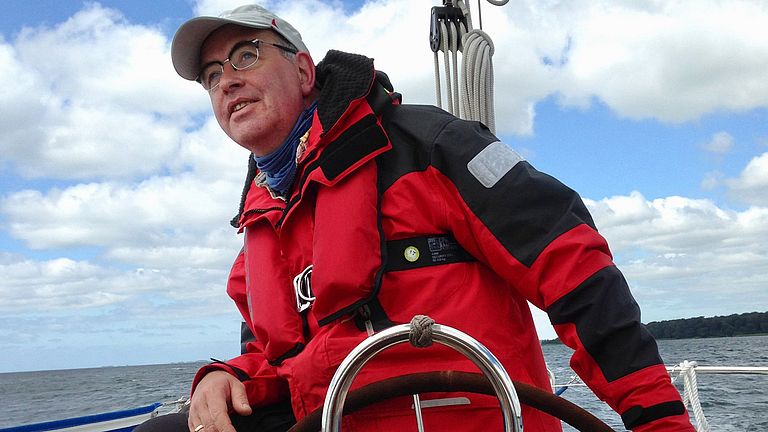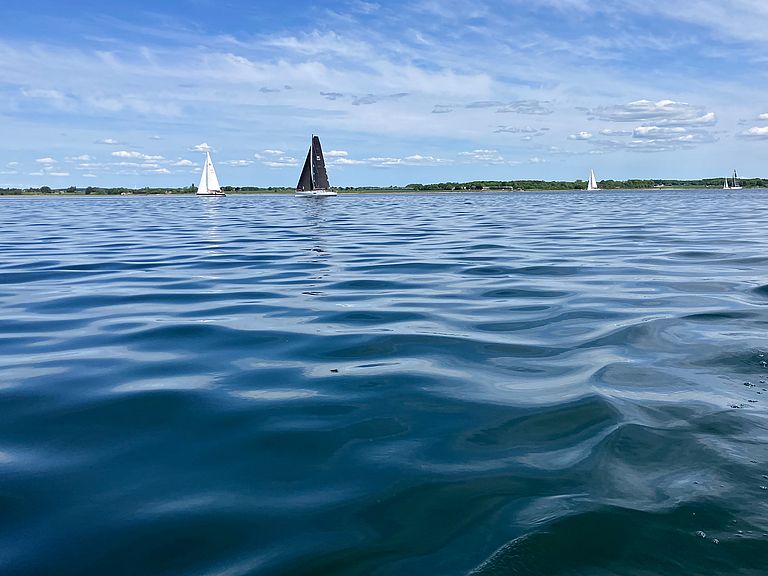Fishing data for science
New project involves sailors in Baltic Sea research
- Joint press release Trans-Ocean –Verein zur Förderung des Hochseesegelns e.V. and GEOMAR Helmholtz Centre for Ocean Research Kiel -
How much oxygen is there the Baltic Sea at different water depths? How do the concentrations of this life-giving gas change over the course of the summer? In order to obtain more accurate answers to these questions and to better assess the effects of oxygen loss on life in the Baltic Sea, GEOMAR Helmholtz Centre for Ocean Research Kiel and Trans-Ocean e.V. – Verein zur Förderung des Hochseesegelns e.V. invite sailors to go data fishing. Their new joint project “Citizen Science: Sailing for Oxygen” is funded by the Federal Ministry of Education and Research (Bundesministerium für Bildung und Forschung, BMBF) for three years with about 150,000 Euros. It is the first citizen science project that involves a large number of sailors. GEOMAR is responsible for the technical and scientific conception as well as the data integration and evaluation. Trans-Ocean e.V. activates and coordinates sailors and engages with additional sailing clubs.
Participation in the citizen science project under sails is easy: Registered crews receive a simple sensor in selected ports in the southern Baltic Sea, which records oxygen concentration, salinity, temperature and depth. The probe is lowered into the water while stopped or heaved to with a deep-sea fishing rod and controlled via an app on a mobile phone. After recovery, the data and the location are transmitted via the mobile phone, made visible online in real time in the BELUGA data portal and quality-controlled. In accordance with the FAIR principles (Findable, Accessible, Interoperable, Re-usable), they are available to everyone interested. Researchers at GEOMAR will use them for example to estimate the supply and loss of oxygen and to identify risks for fish and other marine organisms. Such information is also relevant for adapted fisheries management.
“The ocean is important for our life on this planet in many ways: It controls the global climate and provides us with food, materials, energy, transport and recreational opportunities. And yet it is undersampled. In many places, we lack data from direct ocean observations," explains Dr. Tanhua, chemical oceanographer at GEOMAR and head of “Citizen Science: Sailing for Oxygen”. “With our project, we are collecting important information on the state of the Baltic Sea – together with those who know and love this area. By engaging with sailors, we share our knowledge with each other, raise awareness of marine conservation and climate change issues, and open up opportunities for the general public to get actively involved in science.”
“We sailors have a special connection to the sea and experience the changes first-hand on our trips. Many would like to get involved in marine and climate protection, and we invite everyone to support the project,” says Marcus Warnke, chairman of Trans-Ocean e.V. “The idea to become active together for research evolved about a year ago, and we are pleased to be able to start this project so quickly. As an association whose members sail all the world's seas and also in extreme areas, and with our 175 bases worldwide, we see many opportunities for cooperation with science.”
Several projects have already shown that commercial and private ships are able to provide excellent support for research. For example, measurements of carbon dioxide concentrations on board cargo ships are already underway in cooperation with GEOMAR. The racing yachts of the global regatta 'The Ocean Race' are also equipped with measuring units co-developed by GEOMAR. “Our collaboration with the sailor Boris Herrmann and his team on the Malizia Seaexplorer has motivated us to now involve a wider public,” reports Dr. Tanhua. “This is also why we are particularly proud to be able to give the starting signal for our new project at the Ocean Race Fly-By in Kiel.”
GEOMAR and Trans-Ocean e.V. will present their project in a joint exhibition tent with Team Malizia and other partners in the Ocean Live Park on the Kiellinie. Sailors can register there for the trial phase and the broader implementation in the coming season. Dr. Toste Tanhua and Marcus Warnke will launch the project “Citizen Science: Sailing for Oxygen” at the “Fly-By Panel” on 9 June 2023, 12 to 13:30 in the Conference Centre on the event site.
The project “Citizen Science: Sailing for Oxygen” also contributes to the United Nations Decade of Ocean Sciences for Sustainable Development and the Global Ocean Oxygen Decade (GOOD) and Ocean Decade Odyssey projects, as well as the Global Ocean Observing System (GOOS). In addition, the data will be fed into the Decade Programme Digital Twins of the Ocean (DITTO).
Background: Trans-Ocean Verein zur Förderung des Hochseesegelns e.V.:
Trans-Ocean Verein zur Förderung des Hochseesegelns e.V. was founded in 1968 to enable participation in ocean racing. Today, the association also empowers, motivates and networks blue-water and long-distance sailors and supports them with almost 200 volunteer bases worldwide. With around 4,700 members (Germany, Austria, Switzerland and internationally) and more than 2,200 yachts under its flag, the association is one of the largest sailing clubs in the German-speaking world. The annual Trans-Ocean Prize is considered one of the most nationally and internationally renowned prizes for special achievements in ocean sailing.
![Dr. Toste Tanhua und Marcus Warnke launched the project „Citizen Science: Sailing for Oxygen“ at the Ocean Race Fly-By on 9 June 2023 in Kiel. Photo: Julia Gehringer, GEOMAR [Translate to English:] Dr. Toste Tanhua und Marcus Warnke](/fileadmin/_processed_/1/1/csm_20230609_SailForOxygen-0191_JuliaGehringer-GEOMAR_b2f3f545f5.jpg)
Dr. Toste Tanhua und Marcus Warnke launched the project „Citizen Science: Sailing for Oxygen“ at the Ocean Race Fly-By on 9 June 2023 in Kiel. Photo: Julia Gehringer, GEOMAR

Fishing data for science: Dr. Toste Tanhua presents one of the oxygen sensors of the new project „Citizen Science: Sailing for Oxygen“. Photo: Sarah Kaehlert, GEOMAR

“With our project, we are collecting important information on the state of the Baltic Sea – together with those who know and love this area", says Dr. Toste Tanhua . Photo: Jens Klimmek, GEOMAR

"Many would like to get involved in marine and climate protection, and we invite everyone to support the project,” says Marcus Warnke, chairman of Trans-Ocean e.V. Photo: privat

How much oxygen is there in the Baltic Sea? Sailing crews can now help to improve scientific knowledge about this. Photo: Maike Nicolai, GEOMAR


